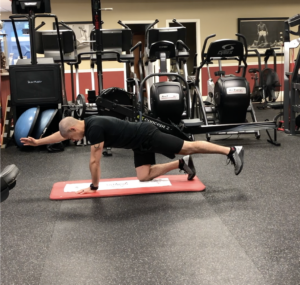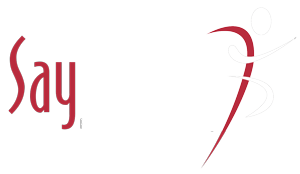
Keeping Families Healthy During Covid-19
We’re spending more time at home to help prevent the spread of coronavirus. But that’s made it easy for families to fall out of normal routines. Relaxed schedules, more screen time, changes in access to food, and no regular recess or gym class can add up to unhealthy weight gain and reduced fitness. So, what can you do to help your family stay healthy? Here are some tips to keep everyone active and eating well.
Is Snacking OK?
Healthy snacks can help manage hunger and boost nutrition. An occasional treat is fine but, serve good-for-you snacks most of the time. Set regular meal and snack times to avoid all-day grazing. Serve 3 meals and 1 to 2 scheduled snacks each day. When it’s time to eat, have kids sit at the table and not in front of a screen. This way, kids are focused on the food in front of them and less likely to overeat.
What Should I Serve?
Make your home a healthy food zone. Put the focus on:
- Fruits and Vegetables.Fresh is great, but frozen or canned fruit and veggies are good options, especially when you want to limit trips to the grocery store. Just choose ones with no added salt, sugar, syrups, or sauces.
- Whole Grains, such as whole-grain bread, brown rice, quinoa, and whole-wheat pasta.
- Foods High in Protein, such as lean meats, fish, dried or canned beans, eggs, and peanut butter.
What Kinds of Food Should We Avoid?
Chips, cookies, and ice cream are OK occasionally, but not every day. Keep junk food and treats out of the house so your kids are not tempted. Save sugary drinks, like soda, juice, sports drinks, and sweet teas for special times. Offer water and milk instead. Packaged foods and prepared meals are convenient, but can be high in fat, sugar, and calories. Check food labels and choose the healthier options.
How Active Should Kids Be?
Encourage your kids to be active for least 30 minutes each day. Whenever possible, let them go outside and play. Go for a walk, run, bike ride, or play sports like soccer, basketball, or whiffle ball together as a family. On cold or rainy days, look for ways for kids to be active inside. Try dancing, yoga, exercise videos, apps, or online classes.
How Much Sleep Do Kids Need?
Getting enough sleep has many health benefits, and helps kids keep a healthy weight. Help your kids get to bed on time and wake up at the same time every day. Skip daytime naps for older kids and turn off all screens at least 1 hour before bed. Sleep needs vary from child to child. But try for:
- toddlers: 11-14 hours, including daytime naps
- preschoolers: 10–13 hours, including naps
- school-age kids and preteens: 9-12 hours a night
- teens: 8-10 hours a night
Why Is a Schedule Important?
Daily schedules can help everyone stick to routines. Besides setting consistent times for sleeping and eating, schedule time for:
- school work, online classes, and reading
- daily “gym class,” recess, and other times to be active
- screen time outside of schoolwork
- chores or other household tasks
- family time to play games, watch a movie, or do other things together, like baking
What Else Should I Know?
The coronavirus pandemic has changed the world in many ways. A focus on healthy habits, like eating well and staying active, can help kids and parents keep a sense of control during an uncertain time.
Be a good role model for your kids by:
- enjoying healthy foods and not overeating
- being active every day
- limiting your own screen time
- finding ways to manage stress
- getting plenty of sleep
.
Nguyen, L. (Ed.). (2020, July). Coronavirus (COVID-19): Keeping Families Healthy (for Parents) – Nemours KidsHealth. Retrieved August 11, 2020, from https://kidshealth.org/en/parents/coronavirus-healthy-at-home.html
Recipe of the Month: Apple Crisp with Cranberries
Directions
- Preheat oven to 350 degrees F.
- Combine fresh and dried fruit with cornstarch and lemon juice in a large bowl. Spread in a 9-by-13in. baking dish. Combine oats, nuts, flour, sugar, oil, cinnamon and salt in a medium bowl. Sprinkle over the fruit.
- Bake until the fruit is tender, and the topping is browned, 30-40 minutes. Let cool for 20 minutes before serving.
Ingredients
- 8 cups diced or sliced apples & pears
- 1 cup dried cranberries
- 2 tbsp cornstarch
- 2 tbsp lemon juice
- 1 cup rolled oats
- 1 cup chopped nuts, such as walnuts
- ½ cup whole-wheat flour
- ½ cup maple sugar, vanilla sugar or light brown sugar
- ½ cup canola oil
- ¾ tsp ground cinnamon
- ½ tsp salt
Active: 15min
Total: 1hr 5min
Servings: 12
Serving size: 2/3 cup
Per Serving:
- 302 calories
- 6g total fat
- 6g carbohydrates
- 5g fiber
- 24g sugar
- 3g protein
.
Move of the Month: Quadruped (Bird Dog)
The Bird Dog movement used as a tool by a host of professionals such as Physical Therapists, Athletic Trainers and Personal Trainers to enhance the function of the core. It may reduce low back pain and is regarded as a safe exercise during recovery from a back injury. A strong core and good spinal stability will help in everyday tasks as well as athletic activities whenever there is a need to bend, twist or transfer load between upper and lower extremities. The main target of the Bird dog is the erector spinae muscles. These muscles lie along the length of the spine, from the skull, neck, and ribs to the vertebrae and sacrum of the hip. They are responsible for extending, flexing, and rotating the spine. The movement also involves the gluteus maximus muscle of the buttocks, which is worked when raising the leg. In raising the arm, you engage the trapezius muscles of the upper back and the deltoids of the shoulder. Meanwhile, other muscles get involved in stabilizing the motion. These include the hamstrings on the back of the thigh, the other gluteal muscles (Medius and Minimus), the piriformis and obturator externus of the hip, the pectoralis and serratus anterior. The other abdominal muscles work as antagonists to the erector spinae. That means the exercise also involves the rectus abdominis and the obliques.




